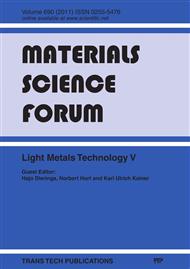p.266
p.270
p.274
p.278
p.282
p.286
p.290
p.294
p.298
Effect of Heat Treatment on the Damage Tolerance Properties of Ti-6Al-2Zr-2V-1.5Mo ELI Alloy Plate
Abstract:
Effect of heat treatment on the damage tolerance properties of a newly developed middle strength high damage tolerance Ti-6Al-2Zr-2V-1.5Mo ELI alloy plate has been investigated in this paper by testing fracture toughness and fatigue crack-extending rate of the plate under three heat treatment conditions and fractograph inspection of the samples. It has been found that with the increasing of the primary annealing temperature from 900°C to 950°C, the fracture toughness increased and the fatigue crack extending rate decreased significantly. Microstructural observation has found that the crack expanded through the α beaming and mainly are perpendicular to the α orientation in the lamellar structure which annealed in α+β phase zone. For the Widmanstaten structure, which can be obtained from annealing in single β phase zone, the continuous grain boundary α phase and α beaming boundary hinder the crack expanding significantly.
Info:
Periodical:
Pages:
282-285
Citation:
Online since:
June 2011
Authors:
Price:
Сopyright:
© 2011 Trans Tech Publications Ltd. All Rights Reserved
Share:
Citation:


